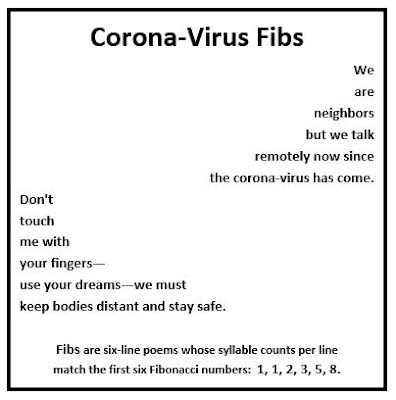1 When1 I2 want to3 understand5 something difficult8 I grab my pen, write about it.
I'm not sure when I made the discovery but by the time I was in graduate school I knew that my learning pattern involved my fingers and my pen. I copied definitions into a notebook, sometimes trying to rephrase them in my own words. I elaborated the proofs of theorems . . . my fingers helped me remember.
November 23 is celebrated as Fibonacci day because when the date is written in the mm/dd format (11/23), the digits in the date form a Fibonacci sequence: 1,1,2,3. A Fibonacci sequence is a series of numbers where a number is the sum of the two numbers before it. A Fib is a tiny poem whose lines have as syllable-counts the first 6 Fibonacci numbers.
For more Fibonacci-related poems, follow this link.





